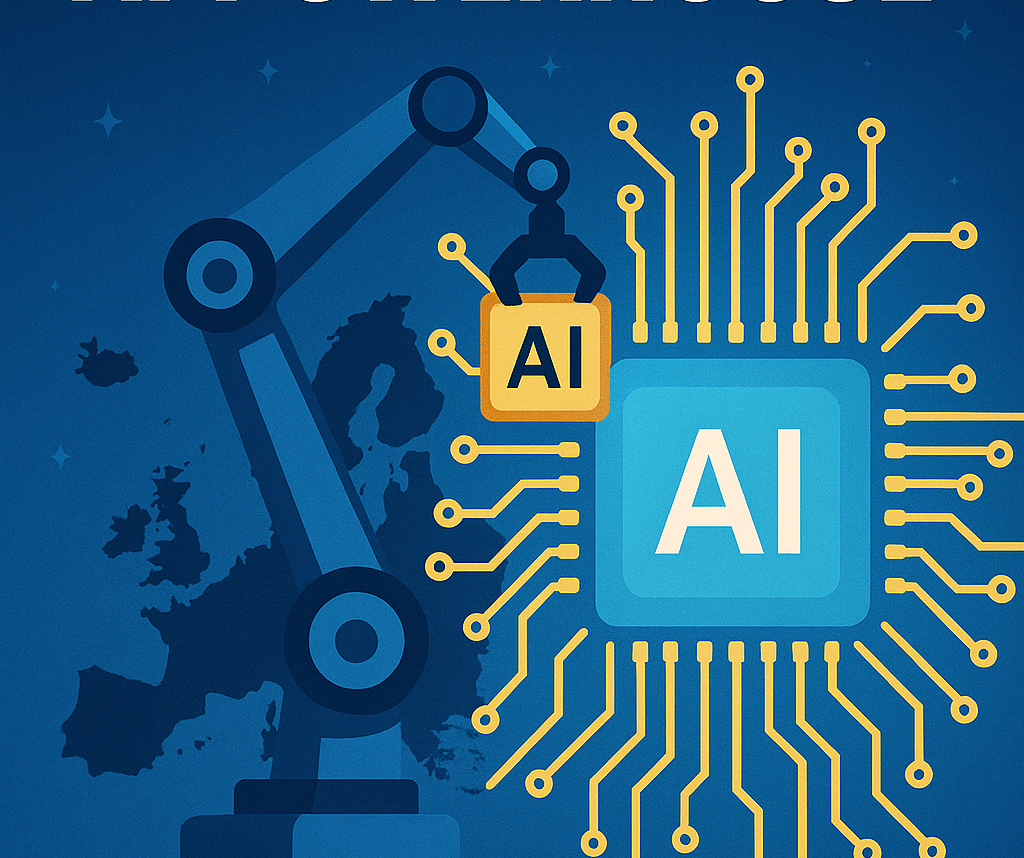Europe’s AI Revolution: How NVIDIA Is Powering a Technological Renaissance
Europe Builds AI Powerhouse with NVIDIA
ARTIFICIAL INTELLIGENCETECHNOLOGYTECH INFRASTRUCTURE
Eric Sanders
6/11/20254 min read


A New Age of Technological Sovereignty
Europe is making a bold move to establish itself as a leader in artificial intelligence. In a historic partnership with NVIDIA, several European nations are taking major steps to create AI infrastructure that isn't just cutting-edge—but sovereign, secure, and built for the long term. This collaboration isn’t about short-term headlines; it’s about rewriting Europe’s technological future.
“NVIDIA is partnering with countries across Europe to advance AI infrastructure, with initiatives to create sovereign AI supercomputers and foster national and regional innovation,” the company recently announced. And with over 3,000 exaflops of performance being deployed via Blackwell systems, this initiative marks one of the most significant technological partnerships the continent has seen.
The conviction is clear: Europe no longer wants to be a passive recipient of technological advances. Instead, it aims to be a birthplace for them.
My Perspective on a Turning Point
As someone who has closely watched the global tech race, this moment feels profoundly different. Traditionally, Europe has been known for its regulatory strength in tech—GDPR being one of the most visible examples. Yet there's been a noticeable gap between regulation and innovation. While the U.S. and China ramped up AI investment and infrastructure, Europe risked falling behind in the race to shape tomorrow’s AI landscape.
This is why NVIDIA’s European push feels so monumental. It’s not just about delivering GPUs—it’s about aligning technical capacity with regional independence. Think about what this means on the ground:
- National AI centers: Countries like France, Germany, Italy, and Poland are setting up dedicated AI research and development hubs.
- Localized innovation ecosystems: These centers are designed to empower research universities, startups, and industries to co-create next-gen technology.
- Data sovereignty: With tensions high around global data use, local AI infrastructure means Europeans can maintain control over sensitive data and ensure transparency in how it's used.
As a European tech enthusiast myself, I've often hoped for a future where groundbreaking innovation wasn’t just imported—but made here. This partnership is turning that hope into reality.
What Every Company and Nation Can Take Away
Europe’s collaboration with NVIDIA is filled with valuable insights—not just for policymakers and engineers, but for any business or startup considering how to navigate the AI revolution. Here are a few key takeaways:
1. Infrastructure is Innovation's Foundation
No matter how visionary your AI strategy is, it won’t go far without the right hardware. That’s why the deployment of NVIDIA’s Blackwell systems across Europe is game-changing. These GPUs deliver performance at scale, making them ideal for everything from climate modeling and drug discovery to advanced language models.
“More than 3,000 exaflops of computing power are being built across Europe,” NVIDIA reports—equivalent to magnitudes more than current global AI power combined.
This isn't just about processing speed. It's about unlocking possibilities that were previously out of reach. In real terms, this kind of power allows startups, researchers, and companies to:
- Train models faster and more efficiently
- Run more experiments with larger datasets
- Iterate on prototypes with shorter timelines
2. Public-Private Partnerships Are the Key to Scale
It’s worth noting that NVIDIA isn’t acting alone. European governments are providing regulatory clarity, financial support, and long-term commitment to build these AI centers. This model—public-private cooperation—is one of the clearest paths to achieving scale and maximizing ROI on high-tech projects.
Other regions can benefit by asking: Are we creating the right frameworks between governments and industry leaders to achieve shared innovation goals?
3. Innovation Should Prioritize Inclusion and Ethics
Through this initiative, Europe is also cementing a vision of ethical AI development. With its strong emphasis on data privacy and transparency, the continent is taking a principles-first approach to technological advancement.
There’s an important lesson here. Ethical frameworks shouldn’t be afterthoughts. When built alongside infrastructure from the very beginning, they become competitive advantages—attracting global partners, researchers, and funding.
Where Will This Lead?
When we zoom out, the implications are enormous. AI-driven industrial transformation is on the horizon, and Europe now has a platform capable of enabling it. We’ll likely see evolution in major sectors such as:
- Healthcare: AI models that personalize medicine and accelerate clinical trials
- Climate science: Accurate, real-time modeling to predict and mitigate environmental risks
- Manufacturing: Next-gen automation for precision and sustainability
- Education: AI-driven tools tailored to local languages and cultural nuance
But this transformation goes beyond technical outcomes; it’s a cultural and strategic declaration. Europe is no longer content to be on the sidelines. With initiatives like this, it’s stepping into an innovation leadership role—and doing so in a way that reflects its values of inclusion, transparency, and sustainability.
What Kind of Future Will You Help Build?
At its core, the European AI push with NVIDIA isn't just about technology—it's about agency. About having the tools, talent, and infrastructure to shape one’s own future and take ownership of progress. As this initiative takes root, it will redefine what’s possible not only in Europe but globally.
So, the question becomes: Where will you stand in the era of AI sovereignty?
Will you be a consumer of innovation—or a co-creator?
One thing’s for certain: the future is no longer confined to Silicon Valley. A new AI hub is rising—and it's speaking not just English, but French, German, Polish, and Italian too.
Efficiency
Transform your workflows and reclaim your time.
Contact Us
Need A Custom Solutions? Lets connect!
eric.sanders@thedigiadvantagepro.com
772-228-1085
© 2025. All rights reserved.
